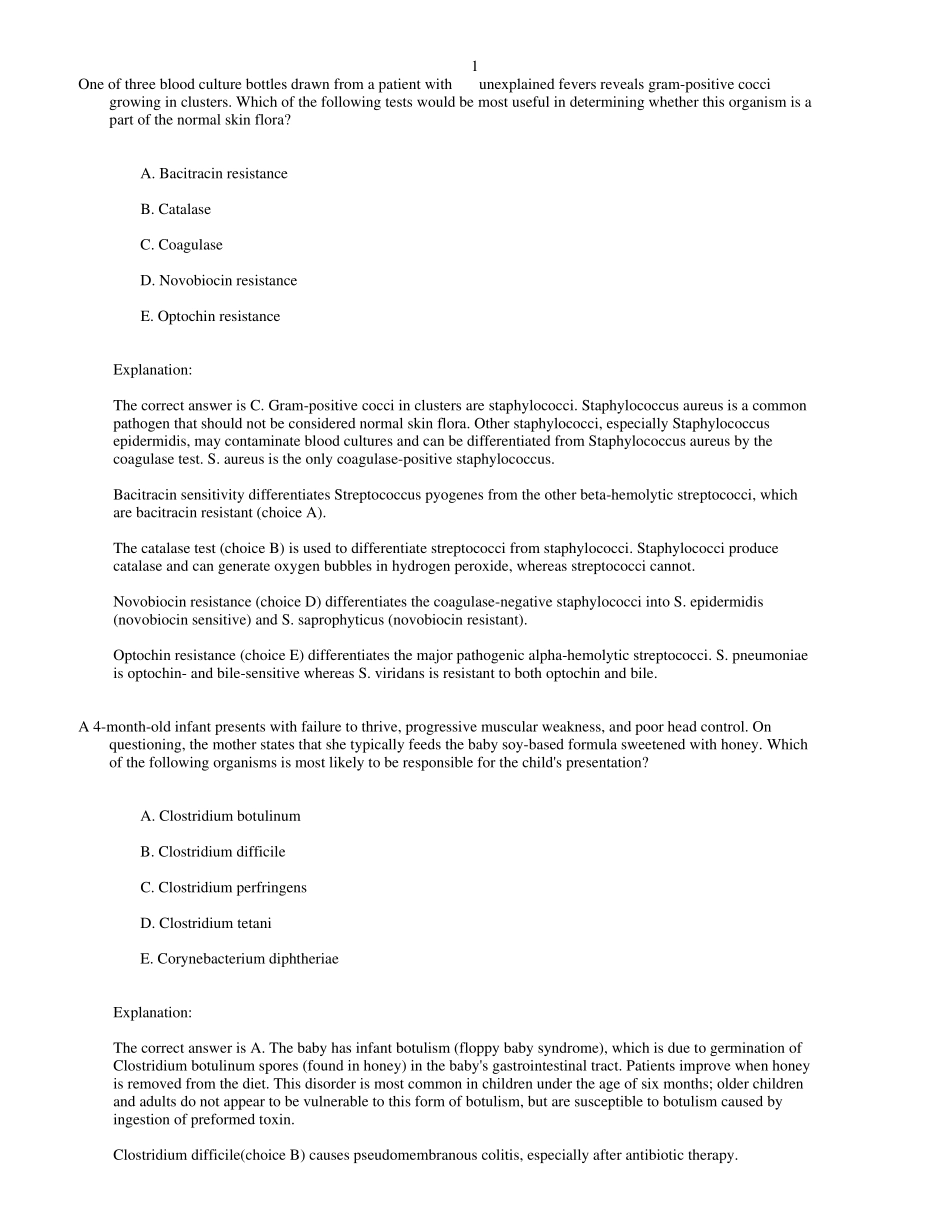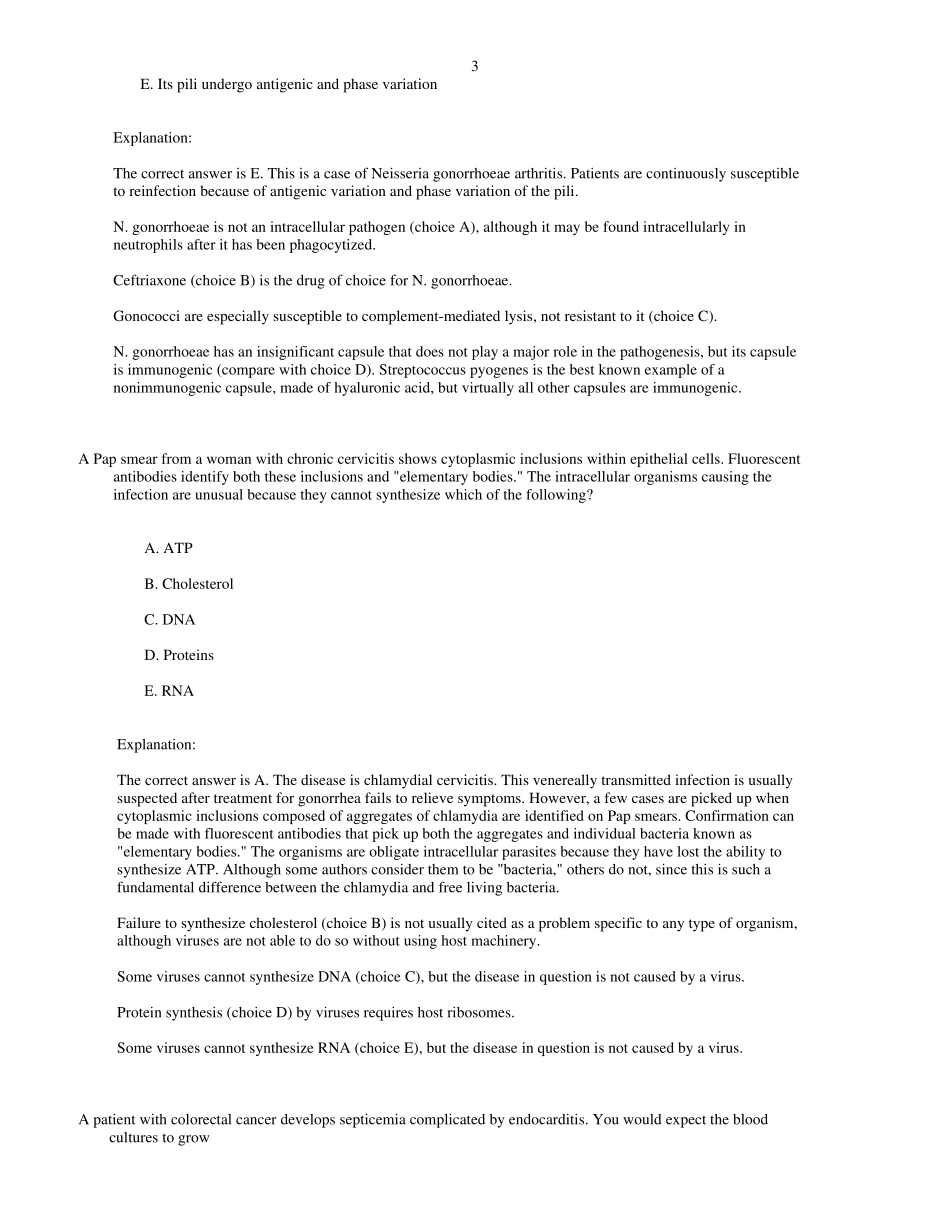1 One of three blood culture bottles drawn from a patient with unexplained fevers reveals gram-positive cocci growing in clusters. Which of the following tests would be most useful in determining whether this organism is a part of the normal skin flora? A. Bacitracin resistance B. Catalase C. Coagulase D. Novobiocin resistance E. Optochin resistance Explanation: The correct answer is C. Gram-positive cocci in clusters are staphylococci. Staphylococcus aureus is a common pathogen that should not be considered normal skin flora. Other staphylococci, especially Staphylococcus epidermidis, may contaminate blood cultures and can be differentiated from Staphylococcus aureus by the coagulase test. S. aureus is the only coagulase-positive staphylococcus. Bacitracin sensitivity differentiates Streptococcus pyogenes from the other beta-hemolytic streptococci, which are bacitracin resistant (choice A). The catalase test (choice B) is used to differentiate streptococci from staphylococci. Staphylococci produce catalase and can generate oxygen bubbles in hydrogen peroxide, whereas streptococci cannot. Novobiocin resistance (choice D) differentiates the coagulase-negative staphylococci into S. epidermidis (novobiocin sensitive) and S. saprophyticus (novobiocin resistant). Optochin resistance (choice E) differentiates the major pathogenic alpha-hemolytic streptococci. S. pneumoniae is optochin- and bile-sensitive whereas S. viridans is resistant to both optochin and bile. A 4-month-old infant presents with failure to thrive, progressive muscular weakness, and poor head control. On questioning, the mother states that she typically feeds the baby soy-based formula sweetened with honey. Which of the following organisms is most likely to be responsibl...


